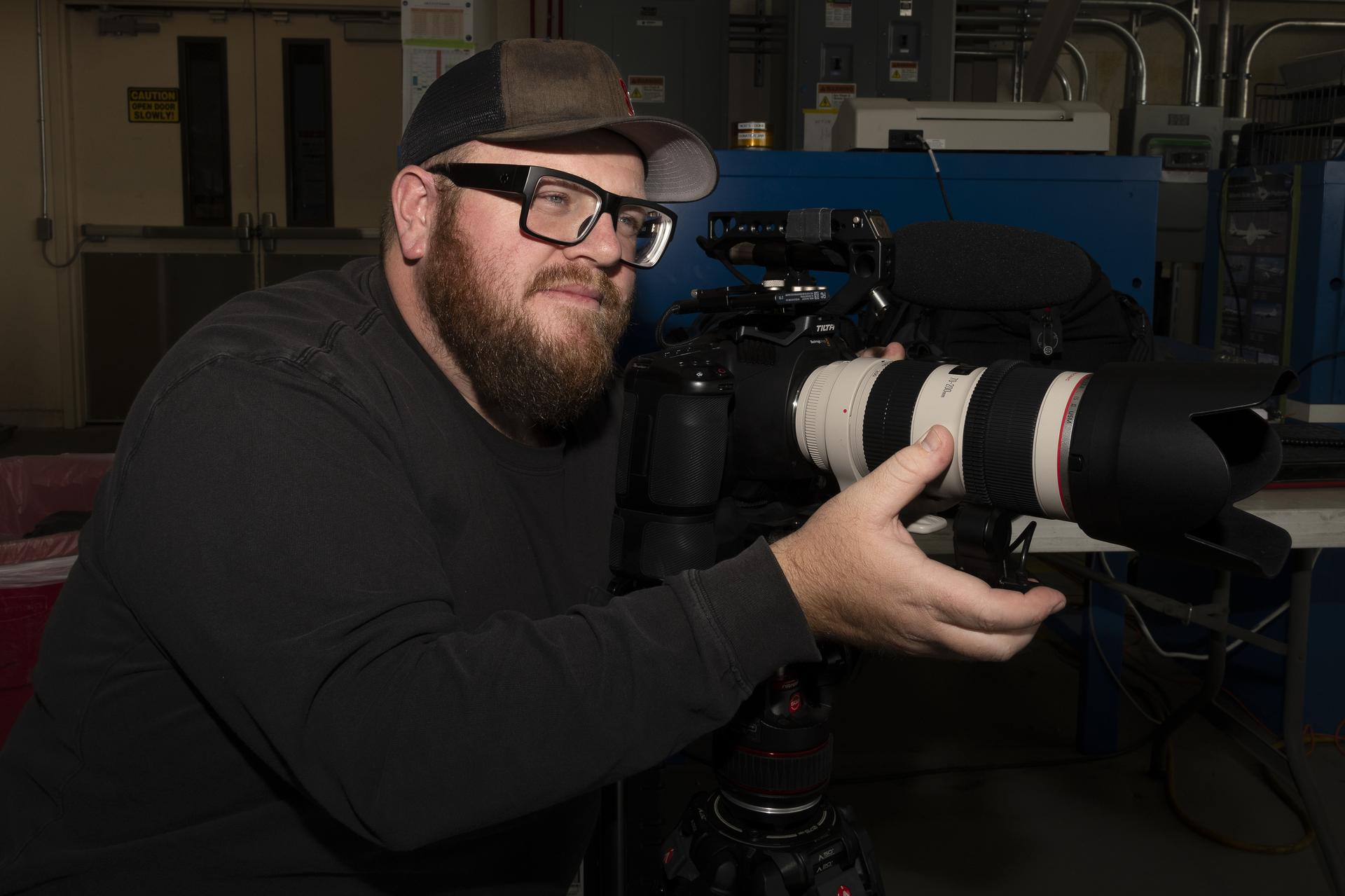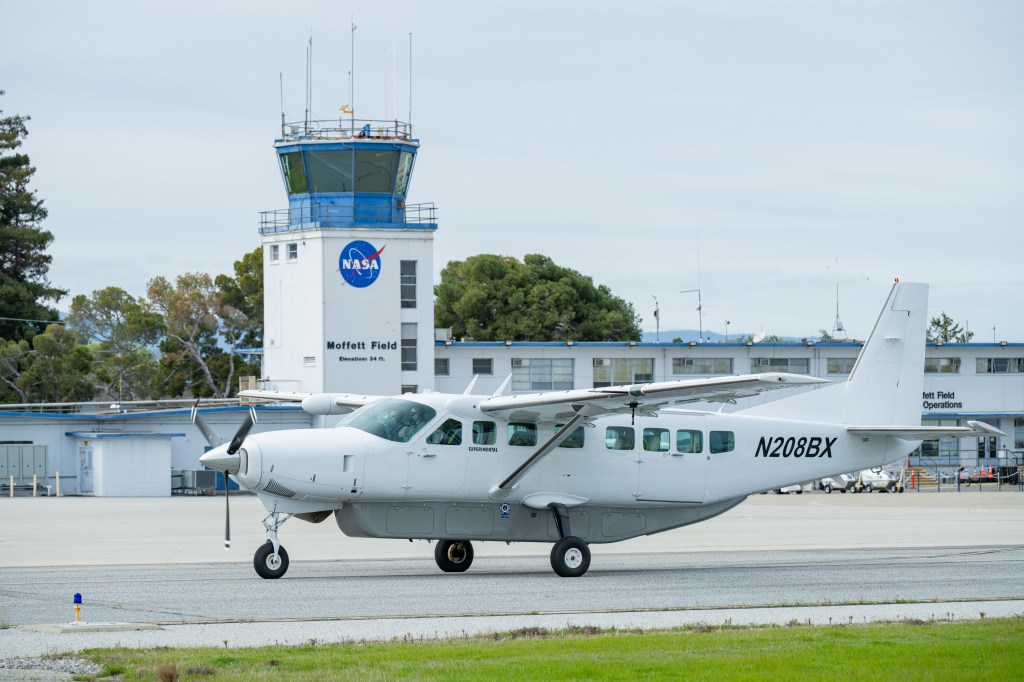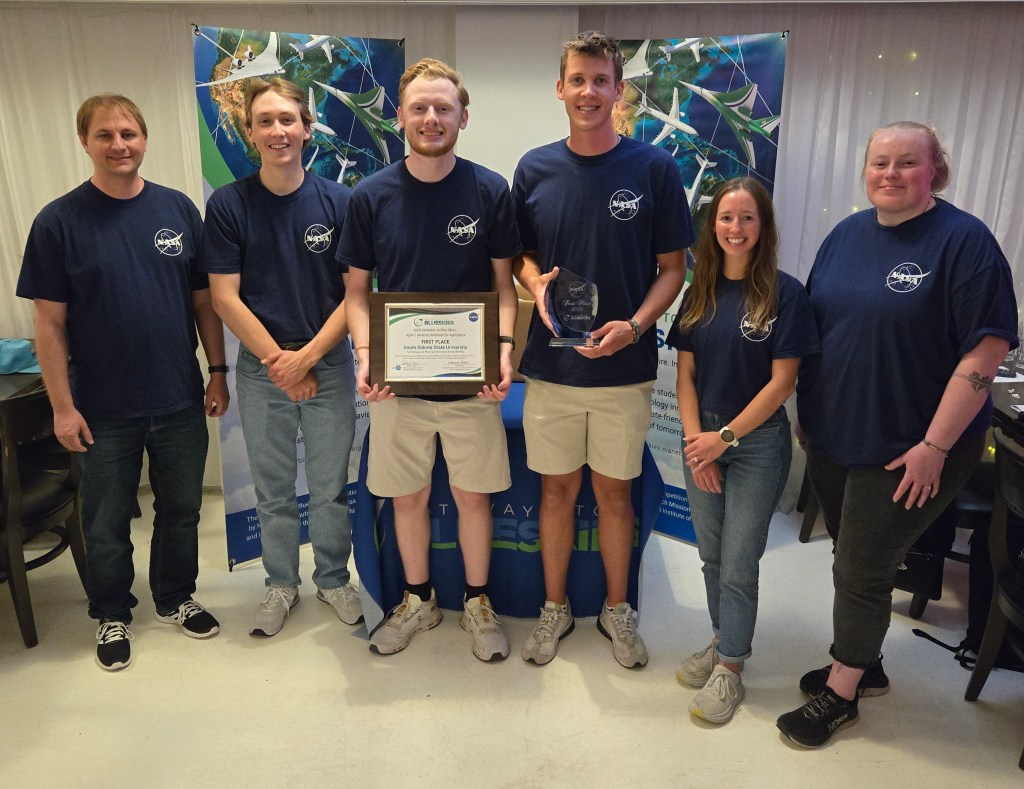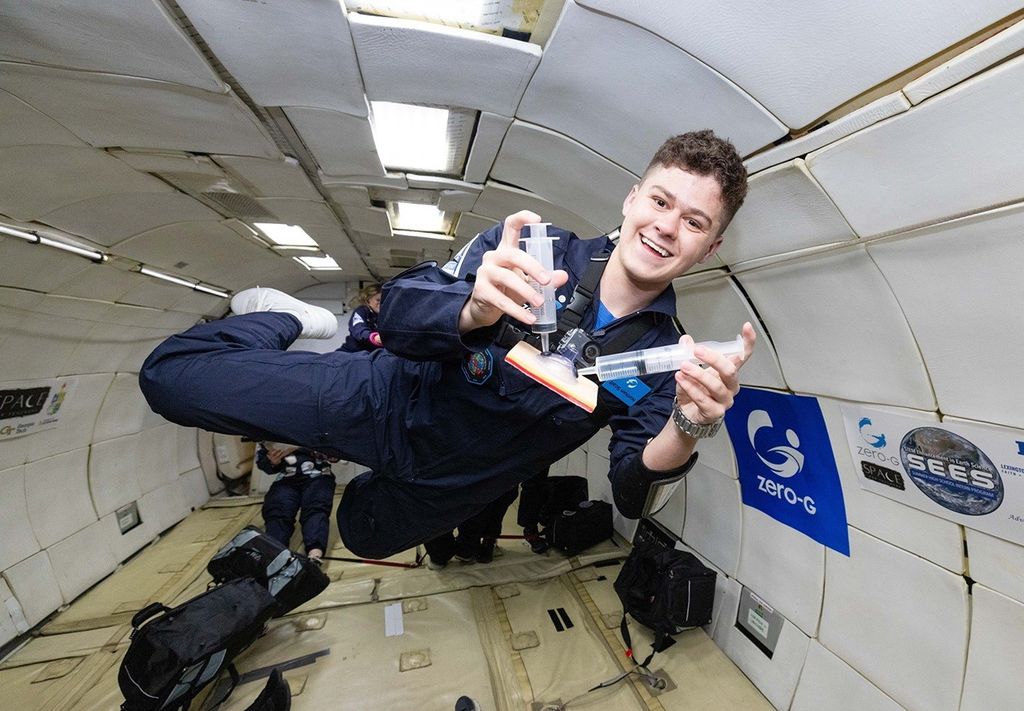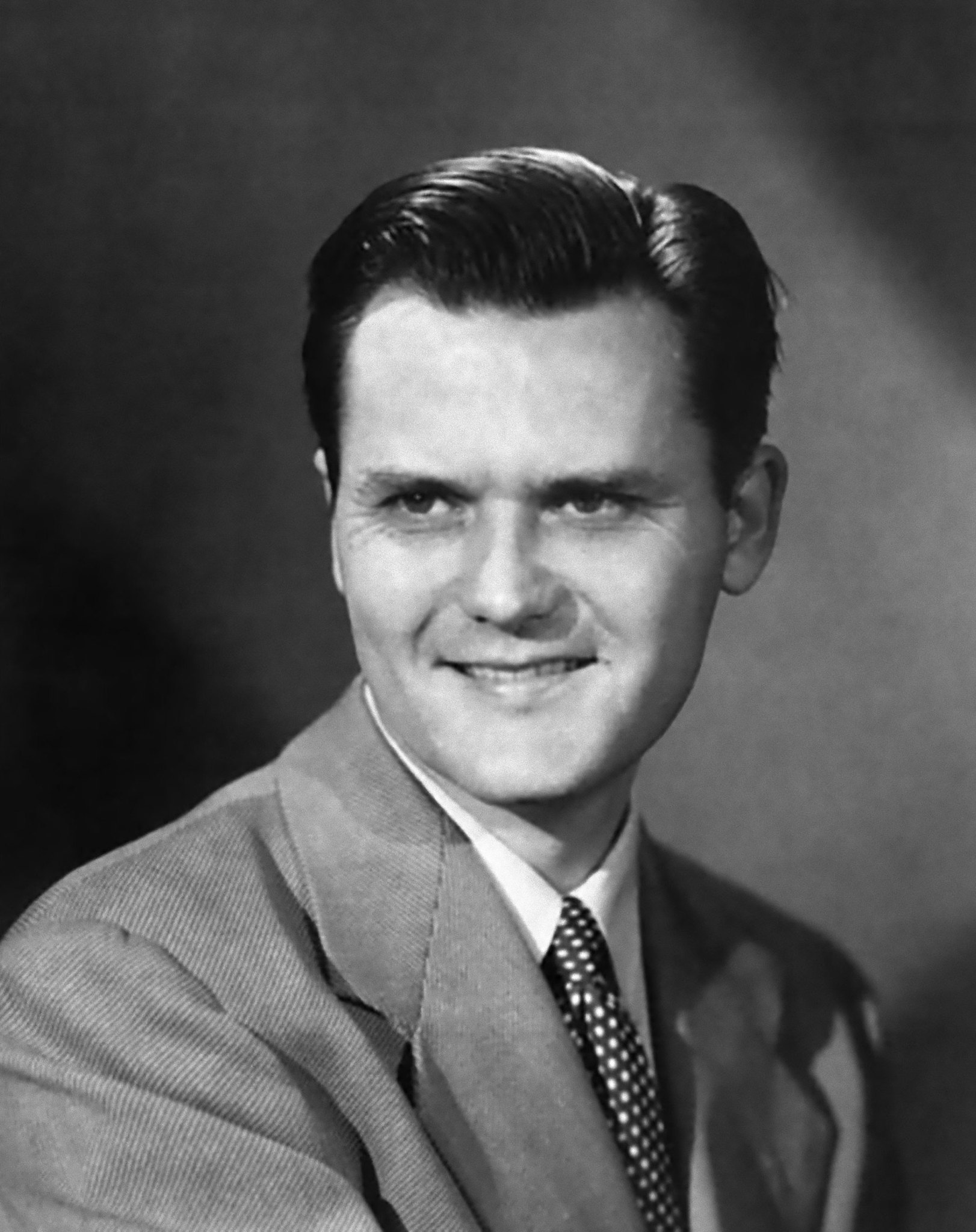Clinton E. Brown
Clinton E. Brown (1920–2008) was a brilliant experimentalist and theoretician who contributed legendary advancements to the aeronautics and space programs of the NACA and NASA.
Brown was born on June 1, 1920, in New York City, New York, but grew up in Madison, New Jersey. He graduated from Purdue University with a bachelor of science degree in mechanical engineering in 1941 and a master of science degree in mechanical engineering in 1942, and was a member of Pi Tau Sigma, an international mechanical engineering honor society. He joined the NACA Langley Memorial Aeronautical Laboratory in 1942 as a junior aeronautical engineer, with early assignments in jet propulsion and supersonic aerodynamics.
His first assignment was working with famous researcher Eastman Jacobs of Langley on Jacobs’ early jet engine concept, which was carried to experiments and known as “The Jeep.” Brown co-authored the only NACA report (Technical Report 802) on the test in 1943 and was a key member of the team that aspired to introduce major research on the topic at Langley. A decision was made to not pursue jet engine research during the war years.
Brown’s next efforts for the NACA focused on supersonic aerodynamics as a member of the Langley 9-Inch Supersonic Tunnel, a facility that was originally intended to be a pilot tunnel for a new large supersonic tunnel at the Ames Aeronautical Laboratory. However, the tunnel contributed to many important projects at Langley, including a critical test involving Brown.
Legendary Langley researcher R. T. Jones had independently discovered the aerodynamic performance advantages of swept-back wings at transonic speeds in 1945. However, an in-house review committee led by Theodore Theodorsen recommended that his report on the concept not be published until validated by experiment. Brown and fellow researcher Macon Ellis conducted tests of a section of wire with a circular cross section set at various sweep angles in the 9-Inch Supersonic Tunnel that verified the dramatic reduction of drag predicted by Jones. Together with additional verification by Robert Gilruth’s flight section, the data provided sufficient verification and Jones’ report was approved for release. Brown became head of the 9-Inch Supersonic Tunnel in 1951.
His follow-on aerodynamics activities included theoretical and experimental investigations of how to obtain maximum supersonic performance for highly swept wings, especially the advantages of incorporating camber and twist in their design. Although Brown’s wing concepts were considered too radical and extremely high risk, his highly swept and cambered wing designs captured the attention of James Modarelli of the NASA Lewis Research Center, designer of the original NASA insignia. Modarelli’s “meatball” insignia features a highly swept and cambered version of a red wing, very similar to Brown’s supersonic wing concept. Conducted during a period in which supersonic bombers such as the B-70 were of interest, Brown designed an advanced supersonic bomber configuration known as the “Brown Bomber” featuring one of his advanced wing shapes, which was tested in several Langley transonic and supersonic wind-tunnels.
In 1952, the NACA passed a resolution to “increase its program dealing with problems of unmanned and manned flight…at altitudes between 12 and 50 miles, and at Mach numbers between 4 and 10” and to “devote a modest effort” to flight above 50 miles and greater than Mach 10. In support of this resolution, Langley was asked to “consider the research problems related to outer atmosphere and space flight.” Director Henry J. E. Reid responded by forming a study group led by Brown, which identified opportunities for a hypersonic airplane that would become the X-15 research airplane.
Brown received the Rockefeller Public Service Award administered by Princeton University in 1954 for outstanding career civilians in the Federal government. At the time, he was head of the Supersonic Aerodynamics Section and used his award funds to attend the University of Göttingen and the Max Planck Institute in West Germany for a year where he conducted studies in advanced aerodynamics.
Upon his return to Langley, he became chief of the Langley Theoretical Mechanics Division in 1955 and contributed to major projects and decisions to NASA’s space programs. Under his leadership, groups within his Theoretical Mechanics Division studied, conceived, advocated, and developed various techniques for efficiently putting a man on the moon. As interest in lunar and planetary missions increased, the group had in-depth discussions of the lunar orbit rendezvous (LOR) concept. In 1959, he was chosen to lead a Langley Lunar Mission Steering Group, that developed multiple concepts for landing a man on the moon. One concept, favored by many influential individuals of the scientific community, would have first created a space station, as a stepping-stone to the moon. Brown strongly objected to this approach, believing it would significantly delay the ultimate moon landing. His influence and advocacy were significant contributors to selection of the LOR approach, that enabled the successful Apollo missions. His influence during the acceptance of the LOR concept was a major contribution to the U.S. space program. During Project Mercury, Brown headed a team designing the lunar landing module, and taught orbital mechanics and space flight to the first seven astronauts and others at NASA.
He became Assistant Director in 1962, and in addition to other duties he taught graduate courses in theoretical mechanics for the University of Virginia. In 1964, he resigned from NASA and joined Tracor Hydronautics Inc. of Laurel, Maryland, to pursue other interests.
His post-NASA projects focused on artificial kidney research, desalinization, ocean thermal energy, marine physiology and aircraft wake vortices. He also taught graduate courses in aerodynamics at the University of Maryland. In 1984 he retired from Hydronautics and worked part time at Dynaflo on a poison gas detection project for protection against acts of terrorism or disaster. Later, he taught graduate compressible flow aerodynamics at Johns Hopkins University.
Clint Brown died at home in Annapolis, Maryland, after a long battle with cancer on July 21, 2008. He was predeceased by his first wife, Jean Poythress, who he had married in 1945.
He was survived by his wife, Jeanie Waldron Brown of Annapolis, who he married in 1966; two sons, Dale Brown of Greensboro, North Carolina, and Gary Brown of Norfolk, Virginia, and his stepdaughter, Linda Stiles of Washington, D.C.


